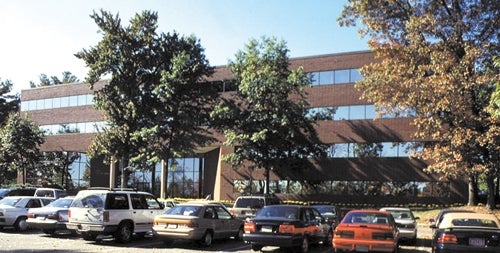Tenants Helped Along I-495 | Experts say things won't get better for commercial landlords anytime soon
 International Data Group recently renewed its lease at 5 Speen St. in Framingham. Economic conditions have put tenants in a strong position when it comes to real estate along I-495.
International Data Group recently renewed its lease at 5 Speen St. in Framingham. Economic conditions have put tenants in a strong position when it comes to real estate along I-495.
Ten years ago, there were lots of slick fellows all over MetroWest snapping up more office space than they really needed for the tech companies they ran, which turned out to be much less successful than they planned.
The result, barely a year later, was office vacancy rates that flirted with 30 percent as crestfallen landlords searched for new tenants to fill the space.
Today, vacancy rates are in the mid-20 percent range for much of the Interstate 495 corridor, and real estate brokers say the situation could get worse before it gets better, especially for landlords.
Back in 1999, “There were a lot of characters, and a lot of people who made a lot of money and a lot of people who missed out,” said Chris Tosti, partner at commercial real estate broker CB Richard Ellis in Boston. “Rents really spiked for the first time in modern history (along the I-495 corridor), and they spiked again in the mid-2000s along Route 128, but not on 495.”
Heroes And Villains
Firms that represent both tenants and landlords look like heroes to tenants these days. With vacancy rates up and lease rates down, things have improved for tenants. But prospective new tenants simply aren’t in the market for space. They’re trying just to stay in business.
“So, the question becomes: When will things improve for landlords?” Tosti said. And the answer is: not anytime soon.
That’s not because prospective tenants will never return to the market.
“You do see deals getting done,” said John Carroll of Boston real estate firm Colliers Meredith & Grew. “The hard part is going to be job growth. When will people start hiring again?”
Whenever it is, it’ll be too late for many landlords, who bought buildings intending to hold them for short periods of time and financed them accordingly.
“Every building is financed differently, but there were a lot of opportunistic owners out there that don’t intend to own for more than five or six years,” Tosti said. Those landlords are finding their buildings too vacant to make ends meet and are having a hard time selling or refinancing them, too.
“There’s not a lot of trouble right now, but there could be,” Tosti said. “There’s no liquidity in commercial real estate. That’s good, because we don’t get the oversupply. But you can’t refinance what you’ve got.”
Many commercial property owners finance building purchases with very short-term debt arrangements that carry large balloon payments that come due in as little as five years.
Those “opportunistic” property owners that got in for the short-term are looking at refinancing their purchases and finding that “We’ve got to renew our loan on it, and we thought the building was worth X, and it’s really worth 75 percent of X, and we may have to write the lender a check,” Tosti explained. Those who can’t write a check will end up in what is, in essence, foreclosure.
The scary part is that “most of the big bundles of debt are coming due two- to three years out,” Carroll said, so depending on landlords’ ability to come to agreements with their lenders, the commercial market may have a long way to fall, but it’s hard to tell how things will shake out.
Landlords are trying to work something out with lenders, but “it’s hard to see who’s doing work-outs behind the scenes,” Carroll said.
The result may be a new definition of what is normal in the I-495 market, which has seen swings in lease rates between $16-per-square-foot and $25-per-square-foot.
Carroll said when rents are in the low $20-per-square-foot range, and vacancy rates dip below 20 percent, it could be a sign that some kind of equilibrium has been met.
“We haven’t quite gotten out of the 20 percent range in the last five- to seven years,” Carroll said. He said vacancy rates that hold steady below 20 percent could be the new normal. “That’s higher than what should be equilibrium, but if you look at the trends,” it can’t be considered bad.
One thing that could keep the region’s vacancy rates at that level is the fact that about half of all its buildings are approaching 30 years old.
“It’s quality product vs. older product,” Carroll said.








0 Comments